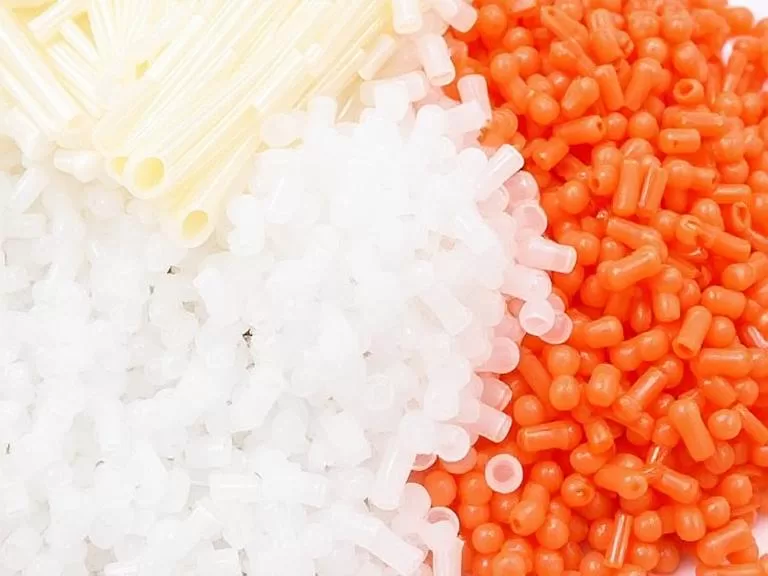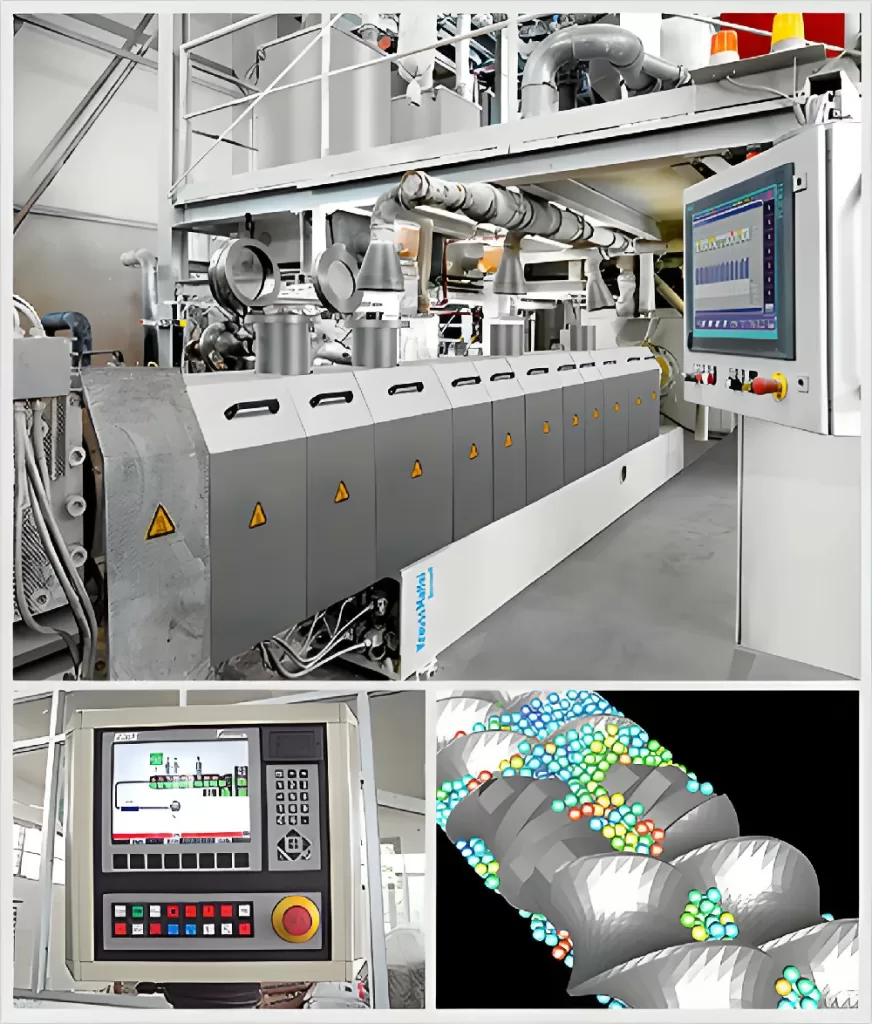Polyisobutylene (PIB), also known as polyisobutene, is a versatile and valuable synthetic polymer widely used in the plastics and rubber industries. It serves as a base material or additive to enhance flexibility, gas barrier properties, and tackiness in various products. From packaging films to lubricants and adhesives, PIB plays a critical role in modern industrial materials.

This comprehensive guide explores PIB plastic’s properties, manufacturing process, applications, and how companies like Charming Masterbatch contribute innovative solutions to enhance its performance through color and functional masterbatch technology.
Table of Contents
- 1. What is PIB Plastic?
- 2. Key Properties of Polyisobutylene (PIB)
- 3. How PIB Plastic is Manufactured
- 4. Major Applications of PIB Plastic
- 5. Advantages and Limitations of PIB
- 6. Charming Masterbatch – Enhancing PIB Performance
- 7. Functional Additives for PIB Applications
- 8. Summary Table – PIB Plastic Overview
- 9. Frequently Asked Questions
- 10. References
1. What is PIB Plastic?
Polyisobutylene (PIB) is a synthetic elastomer derived from the polymerization of isobutylene monomers. It belongs to the same chemical family as butyl rubber and shares many of its flexible and airtight characteristics. PIB is often classified as a thermoplastic elastomer due to its soft, rubber-like texture and its ability to be melted and reshaped.
General Characteristics of PIB Plastic:
- Excellent air and moisture barrier properties
- Outstanding flexibility and elasticity
- High resistance to oxidation, ozone, and UV radiation
- Low gas permeability
- Good dielectric and electrical insulation properties
- Compatible with various fillers, pigments, and polymers
2. Key Properties of Polyisobutylene (PIB)
PIB’s molecular structure—composed primarily of repeating isobutylene units—grants it a unique combination of flexibility and impermeability. The absence of double bonds in its backbone gives it remarkable stability and resistance to aging.
Physical and Chemical Properties:
- Density: 0.91–0.93 g/cm³
- Glass Transition Temperature (Tg): −70 °C
- Melting Point: Approximately 225 °C
- Thermal Stability: Excellent within moderate temperature ranges
- Solubility: Soluble in hydrocarbons and chlorinated solvents
- Elasticity: High flexibility even at low temperatures
These features make PIB ideal for sealing, adhesive, and flexible film applications, particularly in industries where long-term durability and gas impermeability are essential.
3. How PIB Plastic is Manufactured
The production of PIB involves a cationic polymerization process using isobutylene monomers under low temperatures and in the presence of catalysts such as aluminum chloride or boron trifluoride. This process allows for precise control of molecular weight, leading to different grades of PIB—low, medium, and high molecular weight—each tailored for specific industrial uses.
PIB Production Steps:
- Step 1: Preparation of purified isobutylene feedstock
- Step 2: Initiation of polymerization using a Lewis acid catalyst
- Step 3: Control of reaction temperature to adjust molecular weight
- Step 4: Termination and stabilization of the polymer chain
- Step 5: Pelletization or blending for commercial use
The resulting polymer can be further compounded with color masterbatch, UV stabilizers, or antistatic agents to create enhanced PIB-based materials used in packaging, construction, and automotive industries.
4. Major Applications of PIB Plastic
PIB’s exceptional performance characteristics make it suitable for a wide range of industrial and consumer applications. It is commonly used as a base polymer or additive in products requiring airtightness, tackiness, or flexibility.
Common Applications Include:
- Packaging Films: Enhances sealing strength and flexibility in cling films and food wraps.
- Adhesives and Sealants: Provides superior tackiness and long-term stability.
- Lubricants: Used as a thickener and tackifier in industrial lubricants and greases.
- Medical Products: Found in pharmaceutical stoppers and medical-grade adhesives.
- Automotive Industry: Used in tire inner liners to reduce air loss.
- Construction Materials: Acts as a waterproofing agent in membranes and sealants.
When combined with high-performance masterbatches, PIB’s functional versatility expands even further.
5. Advantages and Limitations of PIB
Advantages:
- Outstanding gas barrier properties for airtight packaging
- Excellent chemical and UV resistance
- High elasticity and flexibility at low temperatures
- Compatible with polyolefins such as PE and PP
- Recyclable and reusable in thermoplastic processes
Limitations:
- Limited high-temperature resistance
- Low surface hardness compared to other plastics
- Difficult to paint or print without surface treatment
- May require modification with additives for specific applications
6. Charming Masterbatch – Enhancing PIB Performance

Charming Masterbatch is a leading Chinese manufacturer specializing in color and functional masterbatches that elevate the performance of PIB plastics and other polymer systems. With decades of experience and advanced twin-screw extrusion technology from Germany, Charming delivers precision, consistency, and innovation in every formulation.
About Charming Masterbatch
Founded on the principle of continuous innovation, Charming integrates advanced pigment dispersion and polymer compounding techniques to serve industries such as packaging, fibers, films, and industrial components.
Global Reach
Charming Masterbatch products are well recognized in the Chinese market and exported to Europe, South America, Southeast Asia, the Middle East, and North Africa, covering over 18 countries worldwide.
Customer-Centric Solutions
Beyond high-quality products, Charming provides comprehensive technical support, custom development cooperation, and tailored R&D solutions—helping clients overcome practical challenges and develop next-generation materials.
Product Portfolio:
- Color Masterbatch: Vibrant color solutions for films, fibers, and injection-molded parts.
- Functional Masterbatch: Additives for UV protection, antistatic performance, antimicrobial resistance, and flame retardancy.
- Fiber & Filament Applications: Specialized formulations for BCF, nonwoven, and textile fibers.
- Plastic Film & Packaging: Optimized dispersion and stability for thin-gauge films and PIB blends.
By integrating Charming’s masterbatch solutions into PIB-based materials, manufacturers can achieve superior appearance, functionality, and long-term stability.
7. Functional Additives for PIB Applications
To extend PIB’s usability in demanding applications, functional masterbatches play a vital role. Charming Masterbatch’s additives are engineered to meet performance, safety, and sustainability requirements across industries.
Key Functional Masterbatch Types:
- UV Stabilizer Masterbatch: Protects PIB films and coatings from UV degradation.
- Antimicrobial Masterbatch: Prevents microbial growth in packaging and medical applications.
- Antistatic Masterbatch: Reduces static buildup during processing or use.
- Flame Retardant Masterbatch: Improves safety for PIB-based insulation or automotive parts.
- Color Masterbatch: Adds visual appeal while maintaining thermal and mechanical stability.
Through the integration of these additives, PIB plastics can meet diverse industry demands—from aesthetic packaging to high-performance construction materials.
8. Summary Table – PIB Plastic Overview
| Aspect | Details |
|---|---|
| Chemical Name | Polyisobutylene (PIB) |
| Structure | Polymer of isobutylene (C4H8) |
| Key Properties | Elastic, impermeable, chemically stable, UV-resistant |
| Main Applications | Packaging films, adhesives, sealants, lubricants, tires |
| Advantages | Gas barrier, chemical resistance, flexibility |
| Limitations | Low heat resistance, limited hardness |
| Enhanced By | Color and functional masterbatches from Charming Masterbatch |
9. Frequently Asked Questions (FAQs)
1. What is PIB plastic used for?
PIB is used in packaging films, adhesives, sealants, lubricants, and tire inner liners due to its flexibility and impermeability.
2. How does Charming Masterbatch improve PIB plastics?
Charming’s color and functional masterbatches enhance PIB’s performance by adding UV protection, antistatic properties, and visual appeal while maintaining mechanical stability.
3. Is PIB environmentally friendly?
PIB is recyclable and can be reused in thermoplastic processes. However, proper recycling systems are needed for large-scale recovery.
4. Can PIB be colored easily?
Yes, with high-quality color masterbatch formulations, PIB can be produced in a wide range of stable, vivid colors.
5. Where can I buy PIB masterbatch solutions?
You can contact Charming Masterbatch for color and functional masterbatch solutions tailored for PIB and other polymers.
